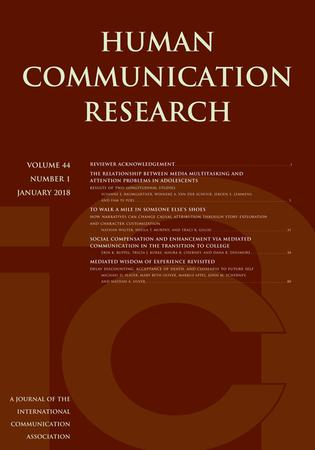Examining semantic (dis)similarity in news through news organizations’ ideological similarity, similarity in truthfulness, and public engagement on social media: a network approach
IF 4.4
1区 文学
Q1 COMMUNICATION
引用次数: 2
Abstract
The rise of homogenization and polarization in the news may inhibit individuals’ understanding of an issue and the functioning of a democratic society. This study applies a network approach to understanding patterns of semantic similarity and divergence across news coverage. Specifically, we focus on how (a) inter-organizational networks based on media ideology, (b) inter-organizational networks based on news truthfulness, and (c) public engagement that news articles received on social media may affect semantic similarity in the news. We use large-scale user logs data on social media platforms (i.e., Facebook and Twitter) and news text data from more than 100 news organizations over 10 months to examine the three potential processes. Our results show that the similarity between news organizations in terms of media ideology and news truthfulness is positively associated with semantic similarity, whereas the public engagement that news articles received on social media is negatively associated with semantic similarity. Our study contributes to theory development in mass communication by shifting to a network paradigm that connects news organizations, news content, and news audiences. We demonstrate how scholars across communication disciplines may collaborate to integrate distinct theories, connect multiple levels, and link otherwise separate dimensions. Methodologically, we demonstrate how synchronizing network science with natural language processing and combining social media log data with text data can help to answer research questions that communication scholars are interested in. The findings’ implications for news polarization are discussed.通过新闻机构的意识形态相似性、真实性相似性和社交媒体上的公众参与来检验新闻的语义(非)相似性:一种网络方法
新闻同质化和两极分化的加剧可能会抑制个人对一个问题的理解和民主社会的运作。本研究采用网络方法来理解新闻报道中的语义相似性和差异性模式。具体而言,我们关注(a)基于媒体意识形态的组织间网络,(b)基于新闻真实性的组织间网,以及(c)在社交媒体上收到的新闻文章的公众参与度如何影响新闻中的语义相似性。我们使用社交媒体平台(即脸书和推特)上的大规模用户日志数据和10个月内来自100多家新闻机构的新闻文本数据来研究这三个潜在过程。我们的研究结果表明,新闻机构在媒体意识形态和新闻真实性方面的相似性与语义相似性呈正相关,而新闻文章在社交媒体上的公众参与度与语义相似度负相关。我们的研究通过转向连接新闻机构、新闻内容和新闻受众的网络范式,为大众传播的理论发展做出了贡献。我们展示了跨传播学科的学者如何合作,整合不同的理论,连接多个层面,并将其他独立的维度联系起来。在方法论上,我们展示了将网络科学与自然语言处理同步,并将社交媒体日志数据与文本数据相结合,如何有助于回答传播学者感兴趣的研究问题。讨论了研究结果对新闻两极分化的影响。
本文章由计算机程序翻译,如有差异,请以英文原文为准。
求助全文
约1分钟内获得全文
求助全文
来源期刊

Human Communication Research
COMMUNICATION-
CiteScore
8.20
自引率
2.00%
发文量
28
期刊介绍:
Human Communication Research is one of the official journals of the prestigious International Communication Association and concentrates on presenting the best empirical work in the area of human communication. It is a top-ranked communication studies journal and one of the top ten journals in the field of human communication. Major topic areas for the journal include language and social interaction, nonverbal communication, interpersonal communication, organizational communication and new technologies, mass communication, health communication, intercultural communication, and developmental issues in communication.
 求助内容:
求助内容: 应助结果提醒方式:
应助结果提醒方式:


